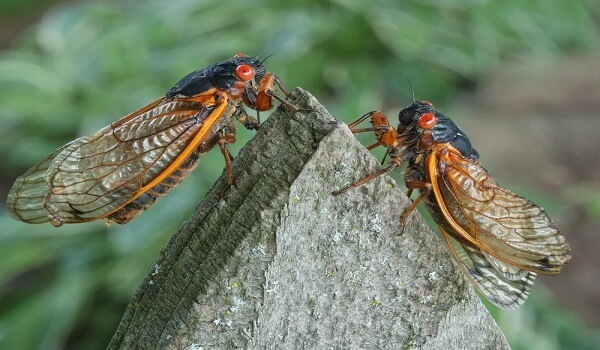One trillion cicadas from two different groups are expected to appear in the Midwest and Southeastern regions of the US by the end of April, 2024. Cicadas are insects that belong to the order Hemiptera and Belong to the superfamily Cycadoidea. Hemipteran insects, also known as true bugs, use their mouthparts to capture food and have two pairs of wings. They spend most of their lives underground and primarily for mating purposes. Come out of the soil. Once out of the ground, their lifespan is between two and four weeks, which is quite a short period.
habitat
- Most cicadas live around the canopy and are found in natural forests with large trees. They are found in every continent except Antarctica.
- In the world, cicadas are generally found in highest abundance in India and Bangladesh, followed by China.
Evolution
- Cicadas have complex life cycles that involve long periods of underground development and short periods of emergence as adults.
- There are three species of cicadas, which come out every 17 years, and three species that come out every 13 years.
- Originally 30 eggs (broods) of periodical cicadas were classified based on geography and time of emergence, but currently only 15 eggs remain active due to some extinctions.
Features
- Researchers believe that cicadas’ long periods of growth, during which they feed on underground plant sap, protect them from predators above ground, before building “cicada huts” and climbing onto nearby trees or vegetation. May be related to avoidance.
- Adult cicadas are vulnerable to predators such as turtles and other forest creatures and become easy prey due to lack of protection.
What happens when cicadas come out
Mechanism
- After emerging from the ground in large numbers, cicadas shed their exoskeletons and transform into their winged forms, often leaving discarded exoskeletons stuck to tree trunks and branches.
- Adult cicadas live for a short period of two to four weeks, during which they eat little, mate, and produce a loud chorus of up to 100 decibels to attract females.
Importance
- In urban areas, cicada corpses can be used as organic fertilizer for gardens and natural areas.
- They act as natural tree hosts and benefit the environment by aerating the soil through pores they leave behind as they emerge from the ground, allowing rainwater to nourish the tree’s roots during the summer months. Absorption occurs.
- Cracks made by cicadas in trees can cause branches to break, leading to “flagging”, which is a natural pruning process. The cicada’s decomposed bodies provide nutrients for the trees and when the branches regrow, they produce larger fruits.

